Living with noise pollution is no fun. Whether the source of the problem is from nuisance neighbors, traffic, or an errant teenager with a drum kit, there are solutions available to suit even the strictest budget.
Understanding the way sound moves and the methods and mediums it uses to invade your privacy are key features in your choice of DIY soundproofing solutions.
Sound is a vibrational energy that transmits in waves. That energy bounces and collides with surfaces, causing them to vibrate. Huge surface areas such as dividing walls, ceilings, and floors are ideal rigid surfaces through which sound is conducted.
Sound can travel through air, water, and solids. There are also a number of methods used to contain and prevent its flow. However, soundproofing can be an expensive procedure.
Undertaking a DIY approach requires an understanding of the many methods through which sound reduction is achieved and the exact combination of these means to suit your capabilities, budget, and requirements.
Adding mass or density to a surface will make it heavier; heavier things are harder to vibrate.
This is one of the first considerations when soundproofing a room as it is relatively simple to install, ideal for all surfaces, and is affordable.
Brick and mortar provide the ultimate in mass but are expensive materials. Even they can be breached by sound waves and benefit from further layers of density.
For instance, adding a layer of drywall to existing walls will increase their overall mass.
Drywall plasterboard is a panel of calcium sulfate sandwiched between two sheets of backing paper. It's lightweight, thin, and has flexibility making it easy to maneuver.
Drywall isn't the only option; plywood, cement board, and OSB can have similar capabilities.
Damping is the reduction in the vibrational energy of a sound before it is allowed to gain momentum and build. Damping is done via reflection or diffusion.
Home damping is available in many forms; mats, rolls, paints, glues, and sprays. The density of these materials is how amplitude is reduced.
For example, carpet underlayment with a high sound transmission class (STC) and impact isolation class (IIC) rating are preferred for deadening impact sound.
To decouple means to separate; to isolate sound between floors, walls, and ceilings. Ideally, this process is done during construction.
For sound waves to travel through walls they need a solid internal structure. The sound will follow the most direct line it can find, which is often the struts or frameworks in walls.
Staggering studs between walls won't compromise on strength but will make it more difficult for sounds waves to get through.
Air cavities trap sound waves where they will resonate – vibrate. We know that sound can travel through the air, and if you have followed other soundproofing methods, such as decoupling, you will inevitably create cavities of trapped air.
Insulation, for example works as a thermal barrier and also helps to absorb sound.
Open-cell woven materials provide excellent cavity insulation. Cellulose, recycled cotton, and mineral wool are such examples.
Sound absorption mounts beneath noisy machinery work in much the same way by 'soaking up' residual sound.
In terms of soundproofing, there are two main sounds you're attempting to combat: airborne and structure-borne.
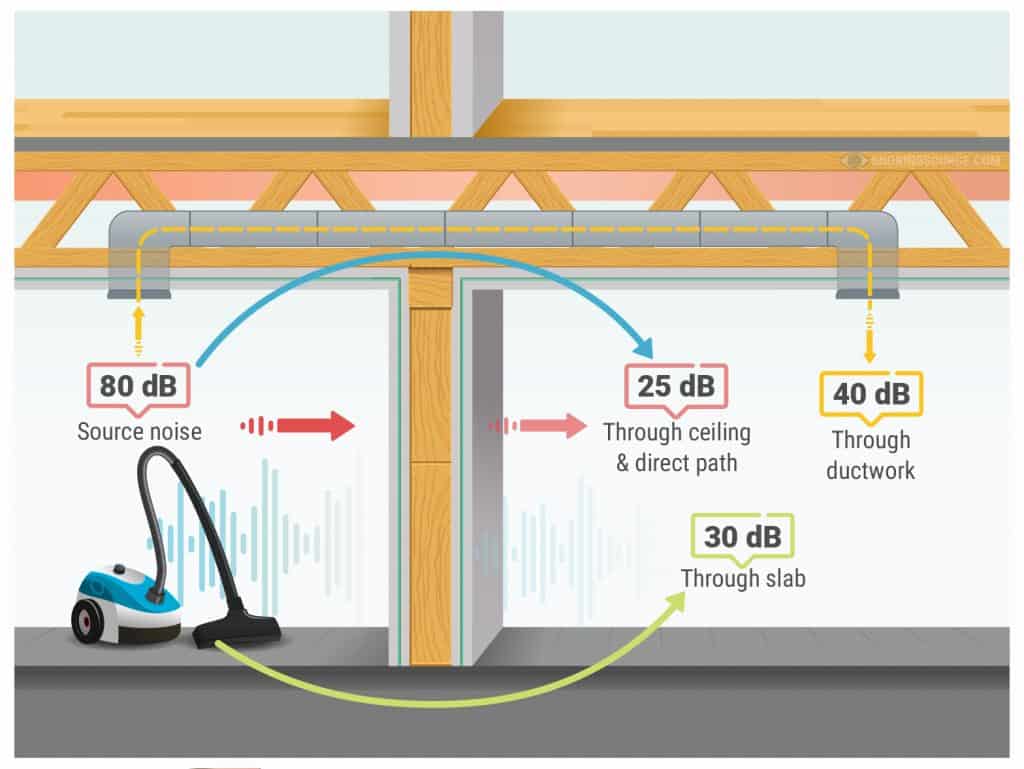
Most sounds that you hear are airborne. Conversations, music, dogs barking, and traffic noise is all transmitted to our hearing receptors through the air.
Sound is an energy that travels in waves and will do so until it hits a solid medium, such as a wall. The impact causes a vibration through the wall into the space around it, filling it with noise.
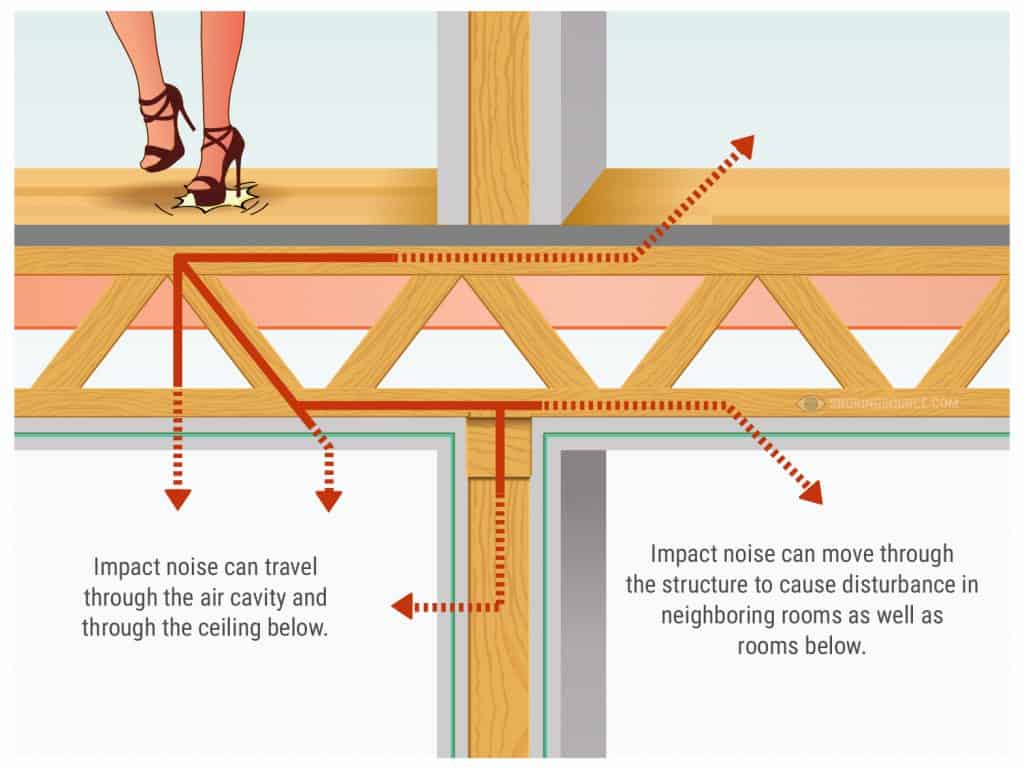
This is sound from the actual structure of a building that causes vibration through dividing walls, ceilings, and floors.
Structure-borne noise is also known as impact noise as objects collide with a surface, they transmit through a structure.
The most common examples are footfalls from shared floors/ceilings, pets scurrying across floors, and home-improvement noise.
Due to the nature of structure-borne noise, it is often harder to isolate.
Newly-constructed buildings should implement sound-proofing techniques as par-for-the-course.
Older buildings may have breaches or don't conform to modern-day regulations. However, structural alterations may not be an option for you.
If tearing down and replacing walls or a huge re-boarding and damping scheme is an undertaking beyond your abilities and budget, fear not. There are multiple ulterior methods to experiment with depending on the source of the noise pollution and the area that you have to soundproof.
Once the source has been identified, whether that involves keeping your noise in or other's noise out, you can begin to isolate and treat the area.

Surprisingly, the furniture that you already own can act as soundproofing equipment, at no additional cost.
Consider swapping out as many hard furnishings for soft, upholstered fabrics.
Beanbags, cushions, and throws all absorb sound if space is at a premium.
Place large items of furniture against the offending wall. A headboard, wardrobe, or large bookcase will block the sound waves and redirect them.
Heavy drapery or soundproofing curtains absorb traffic sounds and interior ambient noise.
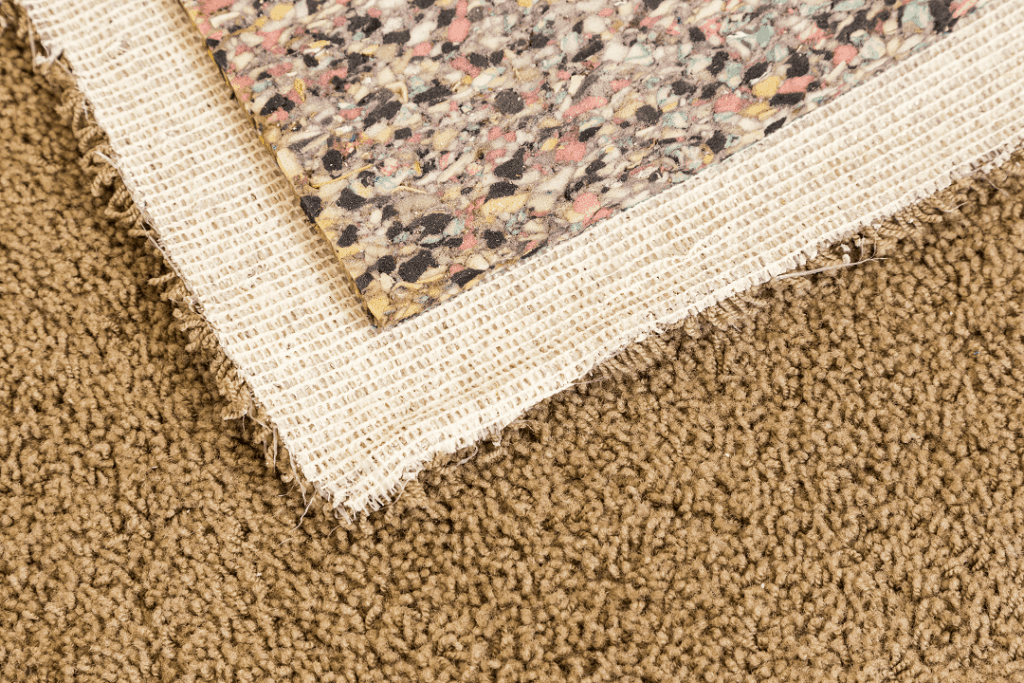
Wall to wall carpeting can help to absorb both impact and airborne sound.
Carpeted floors have half the reverberation time (reflection time of sound waves) of hardwood floors, enabling a much lower decibel output.
Rubber, foam, vinyl, and cork underlay gives flooring a greater density and more cushioning. They deaden impact on the floor to prevent frustrating structure-borne noise for neighbors.
Learn More: The Best Soundproof Underlayment
Thick rugs placed in the most critical areas of sound entry is a good way to cover a large surface area. The thicker the rug, the more sound it can absorb. Consider a foam mat or a layer of mass loaded vinyl between the rug to increase it's density.

Anything suspended from a wall will absorb some level of sound and redirect it.
Acoustic panels are inexpensive and look attractive when hung in the style of wall art. They absorb unwanted sounds and for maximum-effect should be hung on the wall opposite to the one where the noise is coming from.
Noise won't reflect from the foam panels, they simply dampen it.
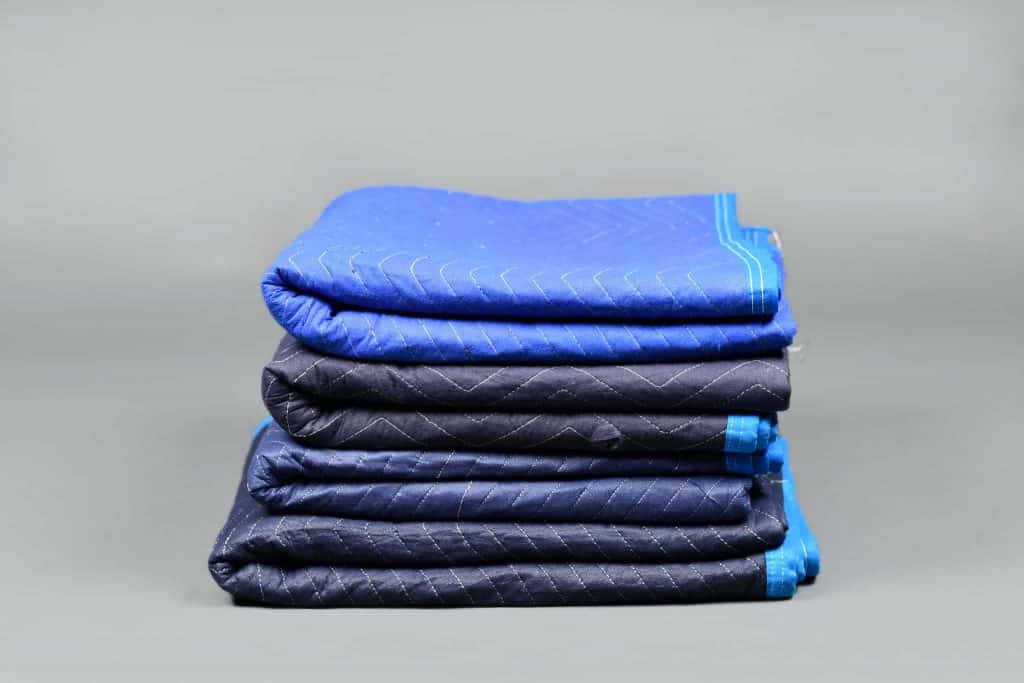
Made of fiberglass or polyester, moving blankets can absorb noise or allow it to bounce off, whilst offering some insulation. Blankets can be hung from walls, doors, windows, etc.
Ideally suited to minimal rooms with lots of hard surfaces. Using a blanket on just one wall will slow the sound wave down and, in effect, make the noise quieter. The more walls you cover and the thicker the blanket, the greater the reduction in sound.
For an even cheaper option, regular household blankets will offer some degree of resolution. Thicker blankets work better. Laid on hard floors, blankets will absorb some airborne and structural noise.
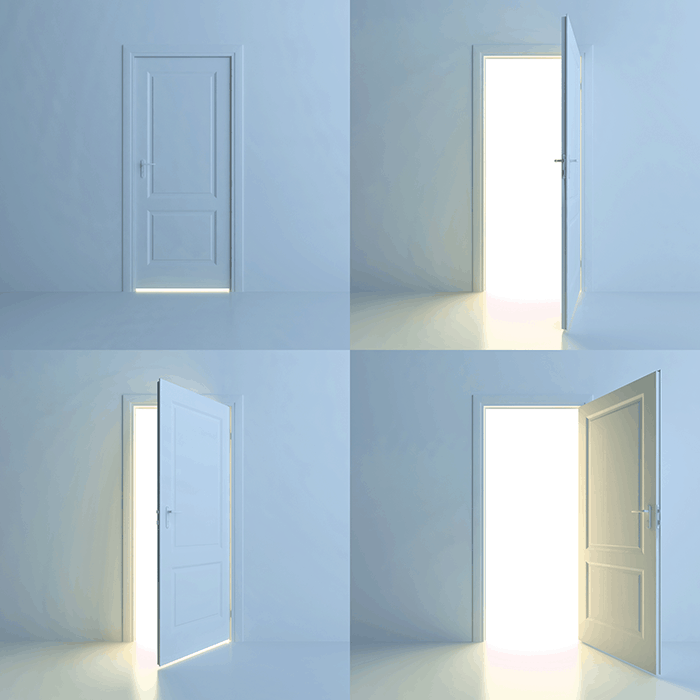
It's important to remember that anywhere light can transmit, so can sound. As we learned above, air is a great medium for sound to travel.
Weatherproofing strips or caulking are easy to apply remedies and will deflect or absorb unwanted sound.
Door sweeps cover the largest gap at the base of a door. They either attach to the bottom of the door with a few screws/clips or they can simply slide under the door.
Reinforcing doors that aren't solid with a sheet of MDF is another way of adding mass and density to a door.
A more expensive option is to simply buy a solid core door. The majority of interior doors feature hollow cores which sound can easily penetrate.
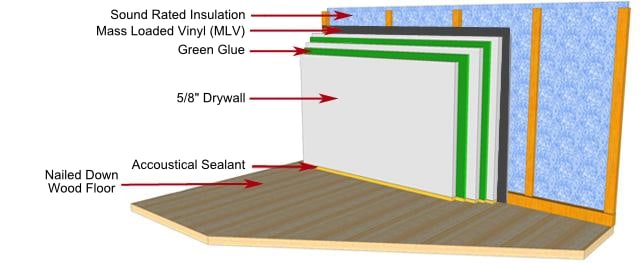
Although re-lining walls with added layers of drywall may create a lot of work, it's still hard to compete with it's effectiveness.
By adding a further 5/8th drywall panels, or better yet, wall assembly of acoustically enhanced gypsum drywall, green glue, and MLV over existing walls, you will make the wall heavier, stronger, and more airtight.
Caulk is a great way to seal the joint around each sheet as it will absorb and deaden sound.
Although drywall is relatively affordable and easy to hang, it requires a degree of competency. Window trims and skirting boards may need to be replaced and electrical outlets and phone jacks will need to be extended.
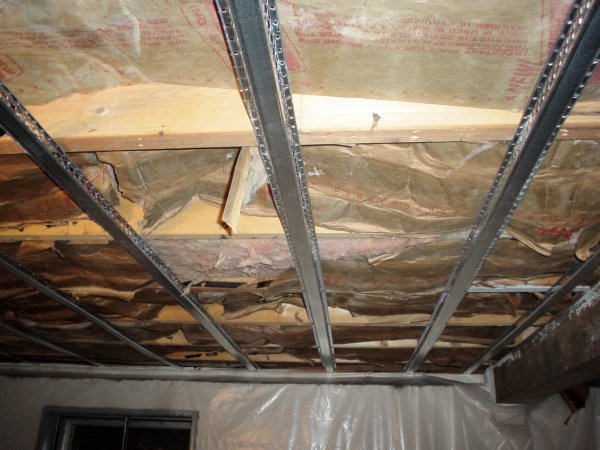
Resilient channels are narrow metal or non-corrosive steel tubes that fit between any stud wall or framework and a sheet of drywall.
The channels isolate the drywall from the frame via the decoupling method described above and drastically slow-down the sound waves, rendering them much less effective and therefore quieter.
They undoubtedly work well and substantially reduce noise pollution. However, they're not practical for existing walls unless you intend on removing all the drywall.
Soundproofing is notoriously expensive. However, DIY soundproofing is doable and can be quite effective with the strategic placement of furniture you already own.

Snoringsource.com is a participant in the Amazon Services LLC Associates Program, an affiliate advertising program designed to provide a means for website owners to earn advertising fees by advertising and linking to amazon(.com, .co.uk, .ca etc) and any other website that may be affiliated with Amazon Service LLC Associates Program.